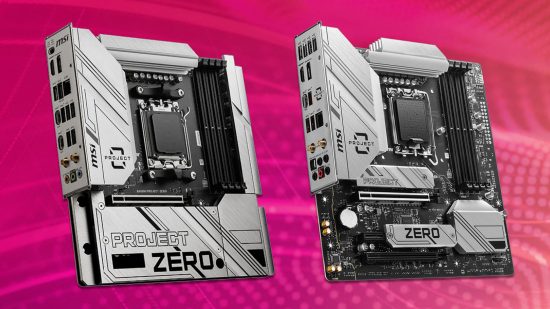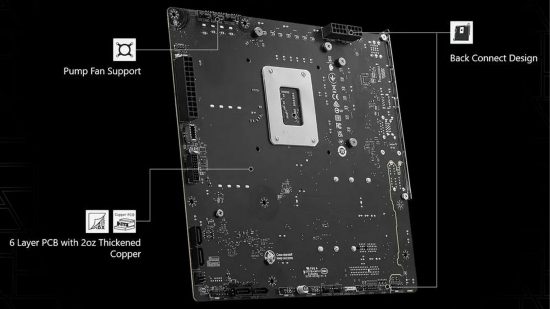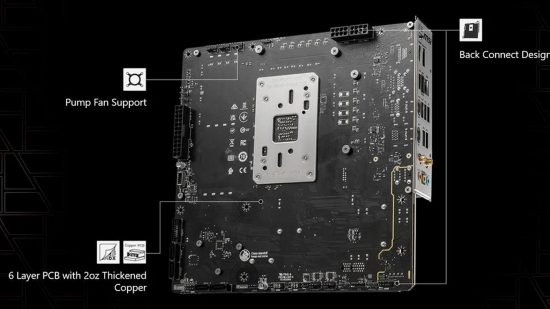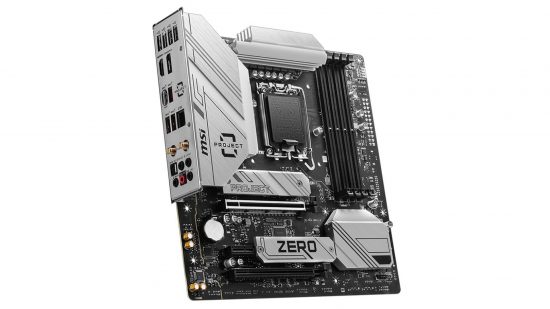MSI has unveiled the MSI Project Zero B650M and MSI Project Zero B760M motherboards that include rear-mounted sockets for their main cables, allowing for the reduction of cable clutter in the visible center of your PC build.
The new MSI motherboards are compatible with AMD AM5 chips, such as the AMD Ryzen 7800X3D, and Intel’s extensive range of LGA1700 chips, such as the Intel Core i5-14600K, and interestingly are micro-ATX form factors, rather than full-size ATX models. Normally associated with more budget or small PC builds, the use of the form factor here would seem to tie in with the desire to open up new styles of PC build for a wide range of users, rather than just targeting high-end setups.

The trend for cable-hiding PC gear has appeared somewhat out of nowhere over the last year or so, with a few initial concepts for rear-mounted sockets on motherboards by the likes of Gigabyte then we had Asus announcing a range of graphics cards and motherboards with an additional power slot to replace the extra power cables required for graphics cards. And, more recently, we’ve seen a raft of graphics cards where the power sockets are hidden inside the card, allowing the cable to exit from the back of the card, rather than sprouting out the top.
Of all these cable-hiding ideas, the simple flipping around of the main sockets on motherboards seems like the most sensible, as MSI has employed here. The likes of the ATX 20-pin power connector, the extra CPU power sockets, the main fan and pump headers, and the standard USB/front panel IO headers are also all just flipped round to face the back of the board. Considering most cables are routed around the back of the motherboard tray anyway then just poked through holes in said tray to reach the headers, it makes sense to just flip the headers round.
Clearly, there will be some cases that aren’t compatible with these designs, but most modern cases and even plenty of quite old ones shouldn’t have any issues.
Getting onto the specifics of each board, the B650M Project Zero specs, it supports AMD AM5 CPUs and includes one PCIe Gen 4 x16 slot, one PCIe Gen 3 x1 slot, two PCIe Gen 4 M.2 for SSDs, four SATA III, and four DDR5 slots supporting up to 128GB of DDR5-7600 memory. This board also uses a 10+2+1-phase power design topped by two large heatsinks sitting on a six-layer PCB.
For IO, there are three USB 3.2 10Gbps ports, two USB 3.2 5Gbps, one USB 3.2 10Gbps Type-C, another 20Gbps Type-C, two USB 2.0, one DisplayPort, one HDMI, 2.5GbE, Wi-Fi 6E, Bluetooth 5.3, and three 3.5mm audio jacks. Clear CMOS and BIOS flashback buttons are also included.
As for the B760M Project Zero specs, it supports all Intel 13th and 14th gen CPUs, and includes one PCIe Gen 5 x16 slot, one PCIe Gen 4 x4 slot, one PCIe Gen 3 x1 slot, and two PCIe Gen 4 M.2 mounts. It also has four memory slots supporting 192GB of DDR5-7800 RAM, while its power setup has 12+1+1 phases.
For IO, you get four USB 2.0 ports, three USB 3.2 10Gbps, one USB 3.2 Type-C 20Gbps, HDMI, DisplayPort, 2.5GbE, Wi-Fi 6E, Bluetooth 5.3, and 7.1 audio through 3.5mm jacks or S/PDIF out.
Are you liking this new trend in hidden cables or is it all a bit of a gimmick? Let us know your thoughts on the Custom PC Facebook page, via Twitter, or join our Custom PC and Gaming Setup Facebook group and tap into the knowledge of our 420,000+ members.








